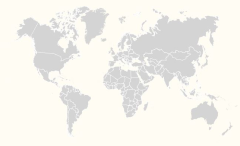Career
He committed at least 27 murders throughout 1996 and 1997. Maake is known as the "Wemmer Pan Killer" because it was in this area of Johannesburg that he targeted most of his victims, beginning in April 1996. At first the Brixton Murder and Robbery Unit of the South African Police Service (South African Police Service), the unit primarily responsible for investigation of serial killers in the Johannesburg Police Area, did not link his crimes together, believing that they were the work of two separate serial killers due to the difference in patterns between the murders.
During the investigation of Maake"s murders two separate criminal profiles were created.
One for the “Wemmer Pan” murderer and one for “Hammer” murders. The Wemmer Pan murders involved several patterns of victims.
The first were men and women walking alone who Maake bludgeoned to death with rocks. The second group of Wemmer Pan victims were couples in cars around the Wemmer Pan area whom Maake would assault, shooting the men and raping the women.
The second criminal profile the police created involved murders of tailors in the inner city area, killed in their shops with hammers.
The connection between the Wemmer Pan murders and the Hammer killings were made by Superintendent Piet Byleveld on 12 January 1998. Maake took Byleveld to a pawn shop in Louisiana Rochelle in the south Johannesburg where he had sold the bicycle of Gerhard Lavoo, a victim in the Wemmer Pan murders, for R 120. The alias he used on the receipt was "Patrick Mokwena", the same alias he had used to check in a shirt at one of the tailors before Maake murdered him.
Maake was arrested in December 1997 as a suspect of the “Wemmer Pan” murders and initially acknowledged responsibility for the crimes.
He cooperated with police officers on several occasions to lead them around the vicinity and point out the locations of his crimes. The data generated by this was later used with Geographic Information Systems (geographic information system or geographical information science) and crime mapping technology to provide diagrams of the geographical extent of the serial murders.
The Wemmer Pan serial killer trial was one of the earliest uses of geographic information system or geographical information science to aid in court prosecution by the South African Police Service. Maake was charged with 36 counts of murder, 28 attempted murders, 15 counts of rape, 46 counts of aggravated robbery, and other offenses relating to the unlawful possession of firearms and ammunition. In court Maake pleaded not guilty to all charges.
One month after his arrest he also confessed to the “Hammer” murders.
On September 6, 2000, he was convicted of 27 murders, 26 attempted murders, 14 rapes, 41 aggravated robberies and many more less serious offenses. He was found guilty of 114 of 134 charges in all and was sentenced to 27 life sentences (one life sentence for each murder) plus 1159 years and 3 months imprisonment. In total, his sentence amounted to 1,340 years in prison.
Cedric Maake was featured in a 13-part M-Net television series called Criminal Minds hosted by Malcolm Gooding.




